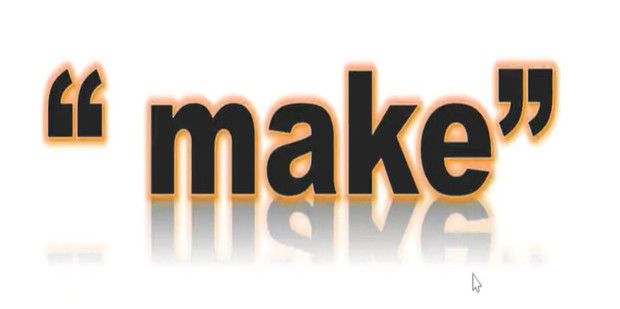
How to Make Financial Literacy Go Viral: Igniting a Global Movement
Financial literacy, the understanding and effective use of various financial skills, including personal financial management, budgeting, and investing, is undeniably a cornerstone of individual and societal well-being. Yet, despite its importance, it remains a subject often relegated to the shadows, viewed as dull, complex, or simply inaccessible. This needs to change. We need to ignite a global movement that makes financial literacy not just important, but engaging, accessible, and, dare we say, viral.
Why Viral Matters: The Power of Widespread Engagement
The term "viral" in the context of content refers to its rapid and widespread dissemination across the internet. A viral campaign has the potential to reach millions, even billions, of people within a short period. For financial literacy, this means:
- Increased Awareness: Exposing a wider audience to the importance of financial education.
- Behavioral Change: Inspiring individuals to take control of their finances and make informed decisions.
- Breaking Down Barriers: Making financial concepts understandable and approachable for people from all backgrounds.
- Creating a Community: Fostering a sense of shared learning and support around financial topics.
The Pillars of a Viral Financial Literacy Campaign
To achieve viral status, a financial literacy initiative must be carefully crafted with the following elements in mind:
-
Simplicity and Clarity:
- Ditch the Jargon: Financial language can be intimidating. Replace complex terms with everyday language that everyone can understand.
- Focus on Fundamentals: Start with the basics. Budgeting, saving, debt management, and basic investing are the cornerstones.
- Short, Digestible Content: Create bite-sized content that can be easily consumed on social media and other platforms. Think infographics, short videos, and concise articles.
-
Relatability and Empathy:
- Speak to Real-Life Struggles: Acknowledge the financial challenges that people face, such as student loan debt, the rising cost of living, and stagnant wages.
- Share Personal Stories: Feature real people sharing their financial journeys, both successes and failures. This can help create a sense of connection and inspire others to take action.
- Avoid Judgment: Financial literacy is a journey, not a destination. Create a supportive and non-judgmental environment where people feel comfortable asking questions and sharing their experiences.
-
Engagement and Interactivity:
- Gamification: Turn financial learning into a game. Apps, quizzes, and challenges can make learning fun and rewarding.
- Interactive Tools: Provide tools and calculators that allow people to apply financial concepts to their own situations.
- Live Q&A Sessions: Host live Q&A sessions with financial experts on social media platforms to answer questions and provide personalized advice.
- Challenges and Contests: Launch financial literacy challenges and contests with prizes to incentivize participation and engagement.
-
Visual Appeal and Shareability:
- High-Quality Visuals: Invest in professional-looking graphics, videos, and animations. Visual content is more likely to capture attention and be shared.
- Optimized for Mobile: Ensure that all content is optimized for mobile devices, as most people access the internet on their smartphones.
- Easy Sharing: Make it easy for people to share content on social media by including social sharing buttons and creating shareable quotes and images.
-
Strategic Partnerships:
- Collaborate with Influencers: Partner with social media influencers who have a large and engaged following. They can help amplify your message and reach a wider audience.
- Work with Educational Institutions: Partner with schools, colleges, and universities to integrate financial literacy into their curricula.
- Engage with Community Organizations: Collaborate with community organizations to reach underserved populations and provide financial education resources.
- Team up with Financial Institutions: Partner with banks, credit unions, and other financial institutions to offer financial literacy workshops and resources to their customers.
Platforms and Channels for Viral Dissemination
To maximize reach and impact, utilize a variety of platforms and channels:
- Social Media:
- TikTok: Short, engaging videos are perfect for capturing attention and sharing financial tips.
- Instagram: Visually appealing content, such as infographics and quotes, can be easily shared.
- Twitter: Use hashtags to join relevant conversations and share concise financial advice.
- Facebook: Create a community page where people can connect, share resources, and ask questions.
- YouTube: Create a channel with educational videos on various financial topics.
- Podcasts: Host a podcast or guest on other podcasts to share financial insights and advice.
- Blogs and Websites: Create a blog or website with articles, tools, and resources on financial literacy.
- Email Marketing: Build an email list and send out regular newsletters with financial tips and updates.
- Traditional Media: Partner with newspapers, magazines, and TV stations to share financial literacy stories and advice.
Examples of Successful Financial Literacy Campaigns
- Next Gen Personal Finance (NGPF): Offers free, high-quality financial literacy resources for teachers and students.
- Financial Literacy Month: An annual campaign that promotes financial literacy through events, resources, and educational materials.
- The Money Girl Podcast: A popular podcast that provides simple, actionable financial advice.
- #FinTok: A community on TikTok where people share financial tips, advice, and experiences.
Challenges and Considerations
- Combating Misinformation: The internet is rife with financial misinformation. It’s crucial to provide accurate and reliable information.
- Addressing Inequality: Financial literacy is not a one-size-fits-all solution. It’s important to tailor resources to the specific needs of different communities.
- Maintaining Momentum: Viral campaigns can be fleeting. It’s important to have a long-term strategy for sustaining engagement and impact.
- Measuring Success: Track key metrics, such as website traffic, social media engagement, and participation in events, to measure the success of your campaign.
The Future of Financial Literacy: A Collaborative Effort
Making financial literacy go viral requires a collaborative effort from individuals, organizations, and governments. By embracing simplicity, relatability, engagement, and strategic partnerships, we can create a global movement that empowers people to take control of their finances and build a more secure future for themselves and their communities.
Let’s make financial literacy the next viral sensation – for the good of everyone!

